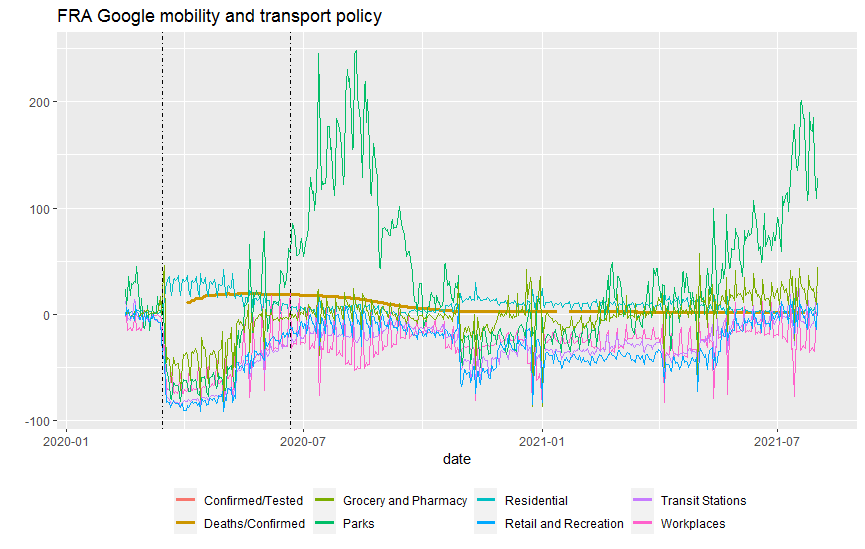The summary of the UK Spring Statement available here was generated by beautifulsoup…
Spring Statement 2022 takes place following the unprovoked, premeditated attack Vladimir Putin launched on Ukraine . The sanctions and strong response by the UK and its allies are vital in supporting the Ukrainian people, but these decisions will inevitably have an adverse effect on the UK economy and other economies too .
The UK economy has emerged from the pandemic in a strong position to meet these challenges . Tax receipts have been stronger than expected, which has contributed to borrowing falling this year and over the forecast period . The government has already taken significant steps to help with the cost of living . This includes a cut to Universal Credit taper rate and increases to work allowances to make sure work pays . The Tax Plan will be delivered in a responsible and sustainable way, guided by the core principle that prudent levels of space should be maintained against the fiscal rules . It will depend on continued discipline on public spending and the broader macroeconomic outlook . Boosting productivity and growth by creating the conditions for the private sector to invest more, train more and innovate more – fostering a new culture of enterprise . The success of the government’s vaccine rollout and the Plan for Jobs have helped support a quicker than expected recovery and a strong labour market .
Elevated global energy and goods prices, following the uneven effect of the recovery from the pandemic on global supply and demand, have already led to an increase in the cost of living in the UK and some other advanced economies .
The repercussions of Putin’s invasion of Ukraine will add to these pressures and increase inflation further in the coming months .
The International Monetary Fund praised the UK’s “strong policy measures and rapid vaccination campaign that helped contain the health, economic, and financial impact of the pandemic . The Plan for Jobs has supported the strong recovery in the labour market, with the total number of payrolled employees in February 2022 2. 3% above pre-pandemic levels . Nominal wage growth was 4. 8% in the three months to January 2022 and the OBR expects nominal wage growth to average 3.3% across the forecast period .
Consumer Prices Index (CPI) inflation has risen to a 30-year high in recent months . This has primarily been driven by global factors outside the government’s control, including disruption to global supply chains and higher global energy and commodity prices . Households on Universal Credit are at least £6,000 a year better off in full-time work than out of work .
Putin’s invasion of Ukraine risks prolonging or increasing existing supply chain pressures faced by firms, which could affect UK growth and inflation in the short term . OBR forecasts inflation to remain elevated through 2022 and 2023, peaking at 8. 7% in Q4 2022 . On an annual basis, inflation is forecast to be 7. 4% in 2022, before decreasing to 4. 0% in 2023 and 1. 5% in 2024 .
Russian President Vladimir Putin’s assault on Ukraine is an unprovoked, premeditated attack against a sovereign democratic state . The UK is at the forefront of efforts to provide essential support to Ukraine and the Ukrainian people . Since 2015 the government has invested in building Ukrainian military capacity and training tens of thousands of Ukrainian troops . Since Putin launched the Russian Federation’s invasion, the government has taken unprecedented measures to exclude Russian entities from international finance and the UK financial system .
The value of the Russian Rouble plummeted to record lows and remains down by about a quarter of its pre-invasion value against the US dollar . External forecasts expect the Russian economy to go into recession in 2022 . Public sector net borrowing in 2021-22 is expected to be £127. 8 billion, lower than forecast in October 2021 . This reflects stronger receipts outturn than expected in October, combined with lower spending .
Public sector debt (PSND) increased from 82. 7% of GDP in 2019-20 to 94. 0% of . GDP in 2020-21 and is . expected to peak at 95. 6% GDP in 2021/22 . At this high level of debt, the public finances are more sensitive to changes in inflation and interest rates . Debt interest spending is forecast to reach £83.0 billion next year – the highest nominal spending ever and the highest relative to GDP in over two decades.
This is nearly four times the amount spent on debt interest last year (£23. 6 billion in 2020-21) and exceeds the budgets for day-to-day departmental spending on schools, the Home Office and the Ministry of Justice combined (totalling £78. 3 billion in 2022-23) The fiscal rules are met with a margin of safety of £27. 8 billion (1. 0% of GDP) against debt falling . At present there is elevated uncertainty surrounding the economic and fiscal outlook . The government’s focus is now on delivering the ambitious plans set out at Autumn Budget 2021 . The government is taking action to tackle waste and inefficiency across the public sector through a comprehensive efficiency agenda . Putting counter-fraud at the heart of decision-making through a new Public Sector Fraud Authority that will tackle fraud . Providing an additional £48.8 million of funding over three years to support the creation of a new .
Public sector net investment will reach its highest sustained level as a proportion of GDP since the late 1970s . Launching a new Innovation Challenge across central government departments to crowdsource ideas for how government can operate more efficiently . The government committed to Parliament to return to spending 0. 7% of Gross National Income (GNI) on Official Developmental Assistance (ODA) when on a sustainable basis the government is not borrowing for day-to-day spending . The worsening outlook for inflation because of Putin’s invasion of Ukraine will likely place additional pressure on households .
The government is already taking action to improve energy efficiency and encourage the electrification of heat . Improving energy efficiency is not only good for the climate but can also save households hundreds of pounds a year . The government has already taken significant steps that will help households with the cost of living . Spring Statement announces a temporary 12-month cut to duty on petrol and diesel of 5p per litre . This measure represents a tax cut of around £2. 4 billion over the next year . Self-employed individuals with profits between the Small Profits Threshold and Lower Profits Limit will continue to build up National Insurance credits but will not pay any Class 2 NICs . Spring Statement builds on measures previously announced and goes further . SMEs support 16. 3 million jobs – 61% of total private sector employment .
The government has already reduced the burden of business rates in England . The business rates multiplier will be frozen in 2022-23, a tax cut for all ratepayers worth £4. 6 billion over the next five years . From April 2022, 670,000 businesses will not pay NICs and the Health and Social Care Levy due to the Employment Allowance . Table 3.1 shows the cost or yield of all Spring Statement 2022 decisions with a direct effect on PSNB in the years up to 2026-27 . This includes tax measures, changes to DEL and measures affecting annually managed expenditure (AME) Low earners with profits between the Small Profits Threshold and Lower Profits Limit will not pay class 2 NICs .
This means lower-earning self-employed people can keep more of what they earn while continuing to build up National Insurance credits . The government will reduce the basic rate of income tax to 19% from April 2024 . This is a tax cut of over £5 billion a year, and represents the first cut in income tax in 16 years . This is the largest cash-terms cut across all fuel duty rates at once ever . This is only the second time in 20 years that main rates of petrol and diesel have been cut . This cut represents savings for households and businesses worth around £2.4 billion in 2022-23 .
The government remains committed to refocus support towards innovation in the UK, ensuring that the UK more effectively captures the benefits of R&D funded by the reliefs . The government recognises that there are some cases where it is necessary for the research to take place overseas . Spring Statement is allocating £25. 3 million of the Fund to install over 500 life-enhancing Changing Places toilets in public places and tourist attractions where users want them the most . This will dramatically increase accessibility for thousands of severely disabled people who need specialised facilities .
Putin’s invasion of Ukraine has created significant uncertainty in the global economy, particularly in energy markets . The sanctions and wider responses by the UK and its allies to the invasion are vital in supporting the Ukrainian people . While these decisions will inevitably have an adverse effect on the UK economy and the cost of living, the broader costs of inaction would have been unthinkable . The government has already provided significant support in response to the cost of living, including cuts to Universal Credit taper rate and increases to work allowances .
Spring Statement sets out additional support, through the 5p per litre cut in fuel duty that will be in place for 12 months . Every penny collected from the Levy goes directly to the NHS and social care . UK productivity is higher than the average across the OECD, but it is lower than in some of the UK’s key comparator countries . In 2019, productivity was on average 16% higher in the US, France and Germany than in the UK .
Stronger growth in productivity will drive improvements in living standards and support levelling up . The super-deduction allows companies to write-off the costs of qualifying plant and machinery investments against taxable profits . The UK’s capital allowances regime will include the Annual Investment Allowance and Structures and Buildings Allowance . The overall tax treatment for capital investment is less generous than the OECD average . Increase the permanent level of the Annual Investment Allowance, for example to £500,000 .
Increase Writing Down Allowances for main and special rate assets from their current levels of 18% and 6% to 20% and 8% . At its peak, this could cost around £1 billion in a single year . Introduce full expensing of plant and machinery could cost significantly more than the above options .
The UK lags behind its international peers in adult technical skills . Just 18% of 25–64-year-olds hold vocational qualifications, a third lower than the OECD average . Less than 10% of the spending on training by UK employers goes to external providers . Autumn Budget 2021 announced that public investment in R&D will increase to record levels: £20 billion per year by 2024-25; significant progress towards the government’s ambition to spend £22 billion by 2026-27 . Multi-factor productivity growth was faster in the UK than in other advanced economies in the years preceding the financial crisis . In 2019, UK companies claimed tax relief on £47.5 billion of R&D expenditure, but the ONS estimates that businesses only carried out £25. 9 billion of privately financed research in the UK . The SME scheme only stimulates £0.60-£1.70 of additional private R-D expenditure for each £1 of tax relief claimed . Growing businesses need skilled people to put innovation into practice . The government is continuing the review of R&D tax reliefs and further announcements will be made in the autumn . The Spring Statement delivers the biggest net cut in personal taxes in over a quarter of a century . Tax Plan is a key part of the government’s aim of driving economic growth across the country, while making sure the proceeds of growth are shared fairly . It is for the Scottish Government to use this additional funding as they choose to, including reducing income tax or other taxes, or increased spending . This analysis does not include temporary measures to support households in response to the economic effects of the COVID-19 pandemic . It also does not account for behavioural change, changes in the labour market or the wider economic impacts of government policy . This is central government debt interest, net of the Asset Purchase Facility . HMRC estimates based on Annual Investment Allowance claims reported in Corporation Tax returns and Self-Assessment returns in 2019-20, as a proportion of businesses’ reported plant and machinery expenditure on assets excluding cars . If enacted, these policies will accelerate firms’ tax reliefs on new capital investment .









